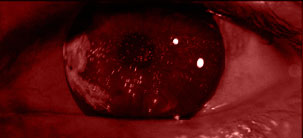A feeling of dystopia and fear is projected in many
futuristic films because they provide a medium to express the growing
anxieties about our changing world. We live in a society where constant
progress of scientific knowledge and technological improvement is
the ultimate means to have a better quality of life, but at what
expense? It has become clear throughout history that the benefits
brought on by this progress more often times is outweighed by its
many detriments such as environmental decay, machine dependency
and as far as abdication of free will. In the films, such worries
on the detriments of society is enhanced and exaggerated towards
a theoretical doom. The familiarity in the settings (or lack there
of) and the current socio-cultural focus on a more technological
era enhances the credibility of these “what-if” scenarios.
The futuristic films focused on the possibility of a hopeless doom or an ill-fated world include pieces from a variety of periods such as Fritz Lang’s Metropolis(1926), Osamu Tezuka’s Metropolis (2001), Alpha-Ville (1965), Bladerunner (1982), Terry Gilliam’s Brazil (1985), Akira (1988) and Stanley Kubrick’s A Clockwork Orange (1972). This website will analyze the believability factors outlined to create fear and a sense of dystopia in the viewers.







